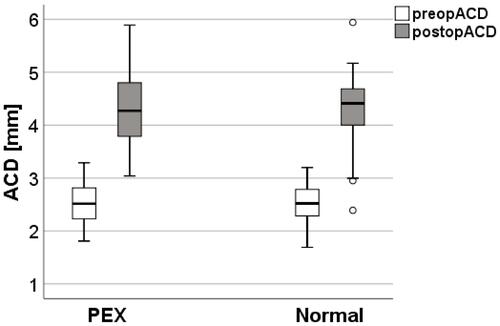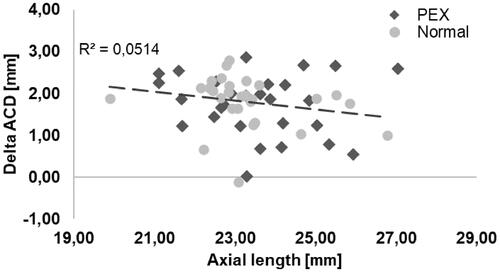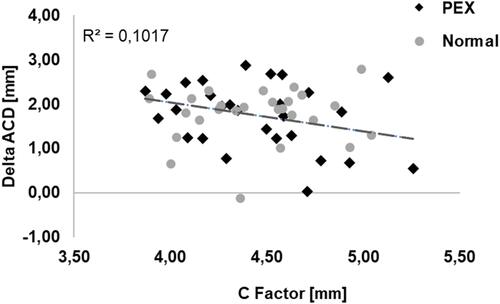Figures & data
Table 1 Baseline Demographics in the Two Study Groups, with and without Pseudoexfoliation Syndrome (PEX)
Table 2 Anterior Chamber Depth (ACD) and Distance Corrected Visual Acuity (DCVA) Three Months After Cataract Surgery in Patients with and without Pseudoexfoliation Syndrome (PEX)
Table 3 Correlation Between 3 Months Postoperative Anterior Chamber Depth (ACD), Delta ACD, Distance Corrected Visual Acuity (DCVA) and Delta DCVA in Patients with and without Pseudoexfoliation Syndrome (PEX)
Figure 1 Comparison of the preoperative and postoperative anterior chamber depth (ACD) in patients with and without pseudoexfoliation syndrome (PEX).



